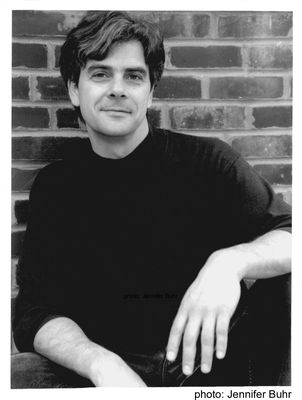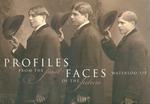Glenn Buhr
Glenn Buhr is a composer of symphonies and ballets who also plays in a
jazz quartet. His accolades include a Juno award for a song he composed
for a con man movie, and top prize in the prestigious Italian Pro Loco
Corciano Competition.
Surveying his diverse musical success, it is no wonder a reviewer remarked once:
“Buhr’s musical imagination appears to be boundless.”
He balances a busy performance and composing schedule with teaching duties at Wilfrid
Laurier University’s faculty of music. His career took off shortly after he finished his
music studies at the University of Michigan and secured a teaching position at WLU.
It was 1984 and Buhr decided to mail out copies of his orchestral dissertation to
symphony orchestras across Canada. While many came back, the conductor of the
Toronto Symphony Orchestra was interested, and in September 1985, Buhr attended his
own world premiere to positive reviews.
Since then, Buhr’s compositions have been performed by chamber ensembles, soloists
and orchestras around the world. His international success is balanced by his strong
support of regional orchestras.
After serving as director of contemporary music for the Kitchener-Waterloo Symphony,
Buhr wrote that community music and a “collective approach” to performance is integral
to healthy culture. While European music is part of our musical identity, he wrote that it
is important that local, contemporary compositions share the stage.
“There is no reason that symphony orchestras should continue to
function like one of Napoleon’s army battalions, with the
conductor as commander-in-chief and the players soldiering on
under his divine guidance, trusting his connections to the great
ones – those gods (mostly dead white European males) who wrote
the music in the first place. The class divisions that supported that
system of governance in earlier times have long since
disappeared.”
Buhr, who has been nominated for four Juno awards, is well known as the co-founder of
the renowned Winnipeg Symphony Orchestra’s New Music Festival. In 1998 he was
named University Research Professor at Wilfrid Laurier University, the first time a
creative artist has been given the honour.
Performing in the Glenn Buhr Quartet, he finds a way to balance the work of his classical
compositions. “Jazz is a social thing. It involves sharing, some originality and crowd
participation . . . Jazz is a nice alternative to writing for orchestra.”
Buhr, who studied at the University of Manitoba and the University of British Columbia,
became interested in music as a teenager. “I started listening to music like crazy, and
yearning and yearning to do it,” he said, “I’ve been doing it ever since.”
Photo courtesy of Jennifer Buhr
Glen Buhr (Waterloo 150 Profile)
Description
- Creator
- Gallagher, Beth, Author
- Media Type
- Text
- Image
- Description
- To celebrate Waterloo's 150th anniversary, the Waterloo Public Library published a book called "Profiles from the Past, Faces of the Future." This book featured 150 profiles of people who helped make Waterloo what it is today. This is the digitized profile for Glenn Buhr.
- Notes
- Please visit the Waterloo Public Library to enquire about physical copies of "Profiles from the Past, Faces of the Future."
The Waterloo 150 project was funded by a grant from the Waterloo Regional Heritage Foundation. Beth Gallagher wrote the profiles with the assistance of many research volunteers. Information for the profiles was gathered from a variety of sources from the community and the Ellis Little Local History Room. Notable sources include the Ellis Little Papers, newspaper clippings, local magazines and books. - Place of Publication
- Waterloo, Ontario
- Date of Publication
- 2007
- Subject(s)
- Personal Name(s)
- Buhr, Glenn
- Language of Item
- English
- Geographic Coverage
-
-
Ontario, Canada
Latitude: 43.4668 Longitude: -80.51639
-
- Copyright Statement
- Uses other than research or private study require the permission of the rightsholder(s). Responsibility for obtaining permissions and for any use rests exclusively with the user.
- Contact
- Waterloo Public LibraryEmail:askus@wpl.ca
Website:
Agency street/mail address:35 Albert Street, Waterloo, Ontario, Canada, N2L 5E2
- Full Text




